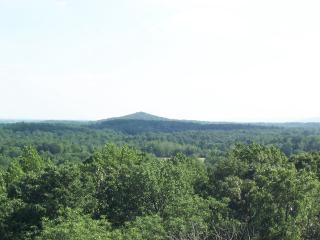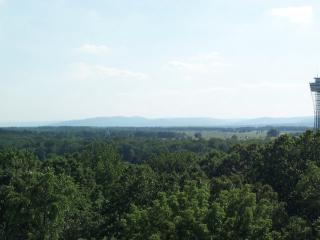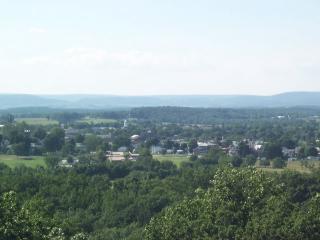After the Federal Army fell back onto Cemetery Hill south of Gettysburg members of the staff of the Confederate 2nd Corps, under the command of Lieutenant General Richard S. Ewell, reported after their (perhaps faulty) reconnaissance that Culp's Hill, southeast of town, was left unoccupied. From this commanding position Confederate Artillery could rain death on the heads of the northern army's rallying point. Among the staunchest of those asking Ewell to move onto Culp's Hill was Major General Issac Ridgeway Trimble. Ewell was Stonewall Jackson's replacement after Jackson's death two months earlier. "Old Jack" would have known the importance of this position, but Ewell wanted to wait for instructions from Lee before doing anything. Had Culp's Hill been taken by the southern army on that first evening at the Battle of Gettysburg the entire Union Army's position would have been endangered and they would have been forced to withdraw from the battlefield, which would have resulted in a Confederate victory. Lee finally instructed Ewell to take the heights south of town "if practicable", the cautious Ewell reading much into that phrase, decided that it wasn't "practicable".

The view of the Round Tops looking south from Culp's Hill.

The Federal position on Cemetery Ridge
In the larger version of this picture you can make out the Union positions. Just left of center is visible the dome of the Pennsylvania Monument. Just right of center is the spire of the New York Monument. At the right edge of this photograph is the "Tower", which was brought down with ten pounds of explosives on July 3rd, 2000. In between the "Tower" and the New York Monument is the Copse of Trees, which would become the focus of the fighting on July 3rd.

The view of Gettysburg and to the northwest from Culp's Hill.
At the time I visited the battlefield I didn't know as much as I do now about the see-saw battle that raged for two days over Culp's Hill. Some accounts suggest that the losses on both sides were greater at Culp's Hill than on any other single place at Gettysburg. I parked the truck just a few hundered feet from Spangler's Spring. Today the spring certainly isn't very impressive looking, which is probably why I didn't take a picture of it. As I looked up the hill from where the truck was parked I could see a row of monuments climbing the slope. In front of those monuments was what appeared to me to be a dried up creek bed, which in actuality is the remnant of breast works built by Federal troops on the night of July 1st-July 2nd. When I get back to Gettysburg, and I will someday return there, this is one of the places that I intend to spend some time. While the park service would prefer that visitors stay out of the trenches on Culp's Hill, I feel compelled to lie in the trench and see if more ghosts of the battle that will appear in my head. On my next visit I think I'll take more pictures of monuments and their surroundings.

